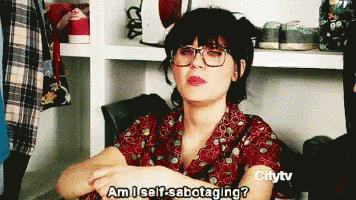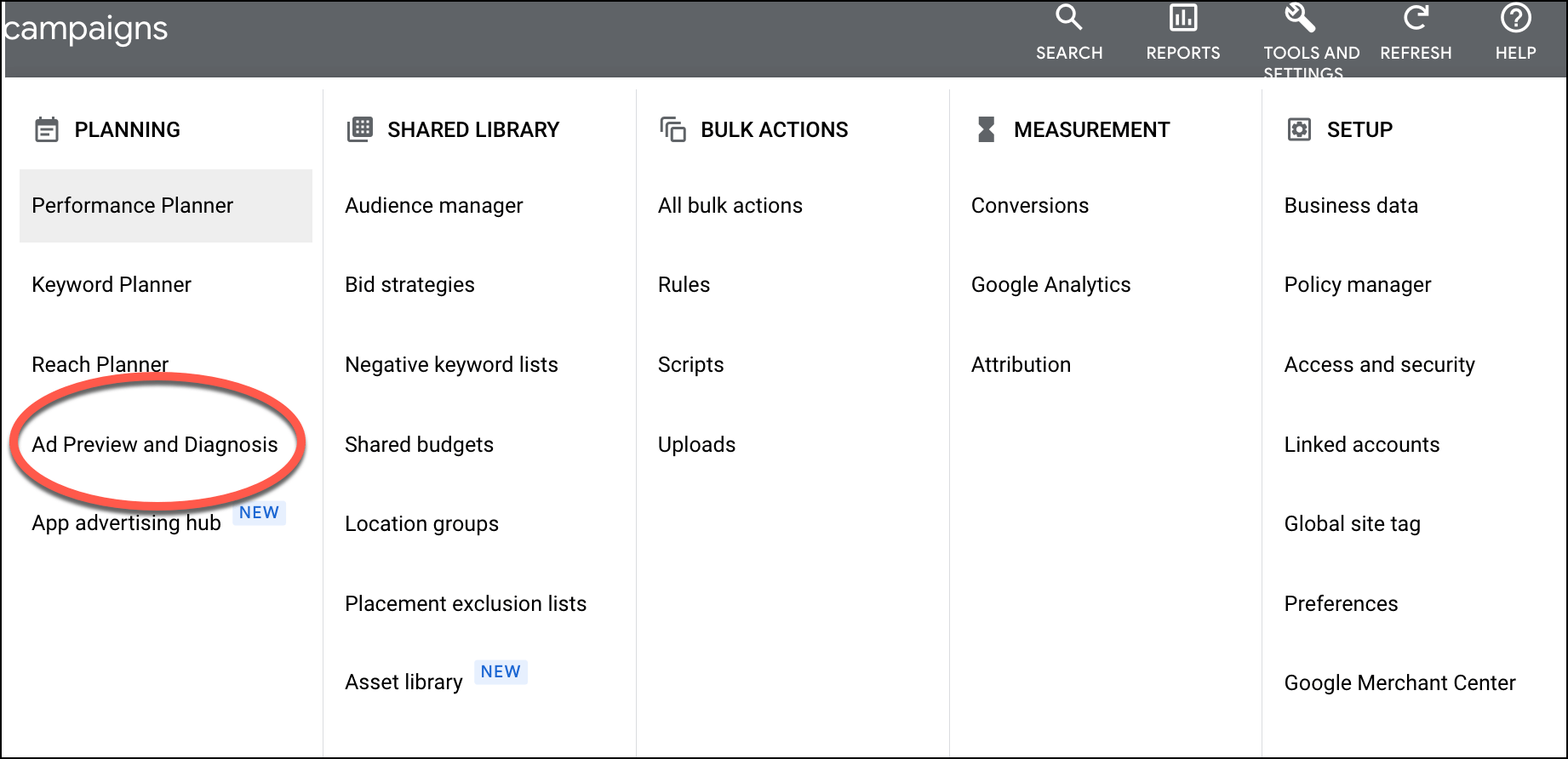While running Google Ads is an extremely effective way for you to get in front of your target audience, it is also an incredibly complex platform with more moving parts than most people initially realize.

A question I’m often asked by our Google Ads clients is “why doesn’t my ad show up when I search for my keywords?” When you begin running a Google Ads account, your performance data can be confusing, and it may seem like the easiest way to gauge your success on the search engine is to search for your own keywords and see if/where your ad shows up.
However, what many people don’t know is that this isn’t actually a good indicator of whether your ads are showing up for your target audience, and that searching for yourself actually hurts your Google Ads performance.
In this article I’ll break down some of the reasons why you may not have seen your ads when you’ve searched for yourself in the past, and why you should never search for your own ads again.
But don’t worry––I’ll also show you an alternative way to check on your ad placement without any of the repercussions below!
Why You Shouldn’t Search for Your Own Google Ads
It Lowers Your Click Through Rate (CTR)
Every time your ad is shown and not clicked, this negatively impacts your campaign’s CTR: the percentage of times your ad was clicked compared to the times it was shown. While you may be focused on your bottom line (conversions) and don’t particularly care about your CTR, Google actually does care…and here’s why you should, too.
Google uses your CTR to help gauge how relevant your ads are to the keywords you’re targeting. A low CTR is one indicator that users aren’t finding your ads relevant to their searches, or that your ads are of poor quality and won’t attract clicks. The outcome is that your ads will be shown less often, they will rank lower, and you’ll see an increase in cost per lead.

You Waste Clicks
You might be thinking “Okay, then I’ll just click on my own ad so I don’t lower my CTR”. This might seem like the logical solution, but it also presents its own set of issues.
First, you cost yourself money every time you click (hence the name “pay-per-click advertising”).
Second, each time you click on your own ad, that’s one less click you can receive from a potential customer. This might seem trivial, but for many small businesses with limited budgets, that one click or conversion is anything but trivial.
For example, say your monthly budget is $1K and your cost-per-click is $3; that means your daily spend is $33. In other words, your ads can be clicked a maximum of 11 times per day––so there is no room for “throwaway” clicks. You want to ensure that those 11 clicks are as likely to lead to conversions as possible.

Why Aren’t My Ads Showing on Google?
So, you know now why you shouldn’t search for your own ads, but that still doesn’t explain why your ads didn’t show up when you did search for them in the past. As it turns out, there are several common reasons why your ads might not be served to you or your coworkers.
Reason #1: Your Target Audience
Whether we like it or not, Google knows a lot about us––which isn’t necessarily a bad thing! Because of this, they’re able to provide us with search results that are tailored to each individual person, so we’re more likely to find exactly what we’re looking for. When we search for something, we’re not simply shown every ad that matches our search terms like you might think. In addition to your search terms, Google also takes many factors into account when showing you ads, including your:
- Location
- Browsing history
- Web history
- Social data
- Operating System
- Device
And depending on whether your account uses demographic targeting, your age, gender, and household income might be a factor as well. So ask yourself, am I my own target audience? If the answer is no, it’s likely that Google already knows this and is purposefully not serving you those ads, and saving them for your ideal prospects instead.
Reason #2: Lack of interest
Another part of Google’s mission to show you the most relevant content possible is to stop showing you content you’re not interested in, and to Google, clicks = interest.
This means that even if Google showed you your own ad at one time (or several times) in the past, once it’s been served to you enough without being clicked, they will eventually stop showing you that ad.
Reason #3: Your budget is limited
It is very common to have campaigns that are labeled as being “Limited by budget”. This doesn’t necessarily mean that your campaign won’t be successful or generate conversions, but it means you’re not showing your ads to as many people as possible.

Here are a few reasons why Google might be labeling your campaign as “Limited by Budget”:
- High search volume
Depending on the nature of your business and location targeting, there might be thousands of people searching for your keywords at any given time. While this provides a lot of opportunity, many advertisers just don’t have the budget to accommodate for all those clicks. - Competition level
Certain industries are more competitive than others, like the legal industry, which translates to higher CPC bids for their keywords––and in some high volume locations even as much as $500–$1k per click! This makes sense considering a single real estate client could translate to tens of thousands of dollars in revenue, so a CPC of $500 is actually a small price to pay for that return. - High keyword bids
While it’s important to stay competitive with your keyword bids, if you have a $30/day budget, bidding $10 for each keyword won’t get you far, and will drain your budget in the process.
Check out our article Running Google Ads on a Limited Budget for tips on maximizing your ad spend.
How Can I Check on My Ad Placement Without Hurting My Performance?
So, how can you see exactly where (and if) your ads are showing up for other users without hurting your Google Ad performance?
Simple: use Google’s Ad Preview and Diagnosis Tool. This is a far more robust, flexible, and accurate way to see how your ad will display.
Here’s how to access this feature:
- Log into your Google Ads account.
- Click Tools and Settings in the navigation menu.
- In the dropdown menu under Planning, click the Ad Preview and Diagnosis Tool.

Here, you can see how your ads will look to other users by entering your keywords into the search bar. Google allows you to see how your ads will appear based on different user factors like:
- The location where the search is performed
- The user’s search language
- The device they’re using (mobile, desktop, or tablet)
- Audience type (if you’re using the Targeting setting in your campaign)

If you’ve performed the search and your ad still isn’t showing, Google provides you with some insight into why your ad is missing in the Reasons column. Some examples of these “reasons” are:
- “Your ad group has a keyword that’s a better match for this search.”
- “Although your ad is showing, its rank is not high enough to place it on the first page of search.”
- “Your ad is probably being shown at times, but was not shown for this particular diagnosis.”

As you can see, some of these examples (particularly the last one) are pretty vague, and will require additional digging through your account to better understand.
What Now?
Enter your details to download our Google Ads Planning Guide

First, no more Googling yourself! Instead, go check out Google’s Ad Preview and Diagnosis Tool to see where you’re stacking up against your competition. If your ad isn’t showing, take Google’s “reasons” and do some digging into your account to get the full picture.
If you’re still stumped and not sure how to improve your ad performance, contact a marketing agency that works with Google Ads (we can recommend a great one ?) and set up an audit of your account. This is a perfect middle ground if you’re looking for some insight but aren’t ready or able to hire someone to run your ads for you.
Most importantly, don’t panic! There is almost always an explanation as to why your ads aren’t showing, and many of them can be easily resolved.

Rachel was born and raised in southern NH, and became an official Mainer in 2016. With an academic background in psychology, she brings to flyte a passion for people and a fascination with what motivates them. This, combined with her artistic skillset, made the decision to pursue a career in marketing a no-brainer.
With a big sense of humor and sentimental nature, she becomes the “morale booster” of whatever group she’s in.
Outside flyte Rachel can usually be found doodling in her sketchbook, doing spot-on impressions (if she does say so herself), or binging the latest Netflix competition show.



